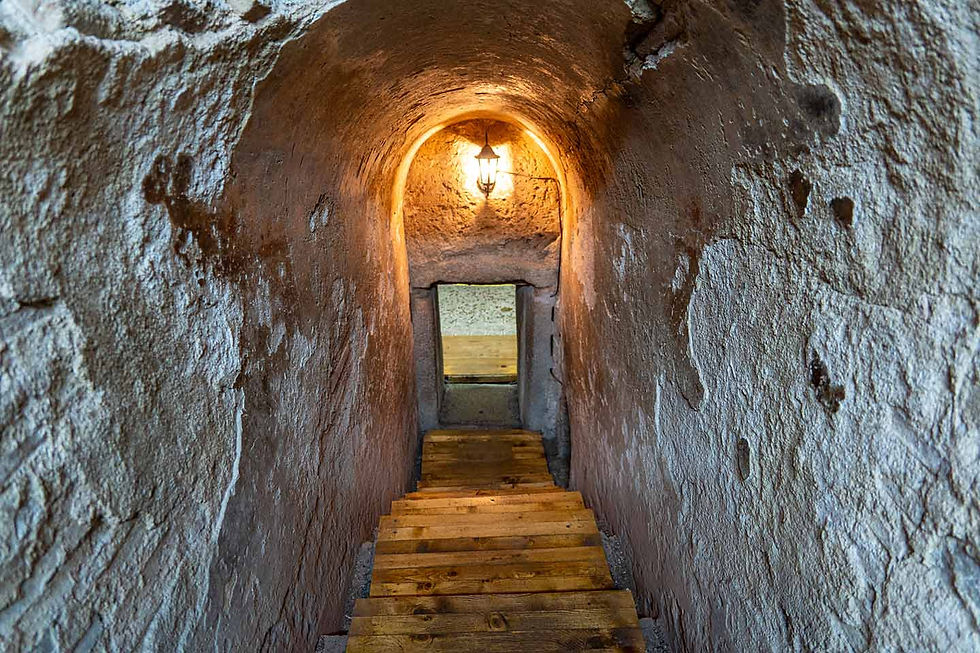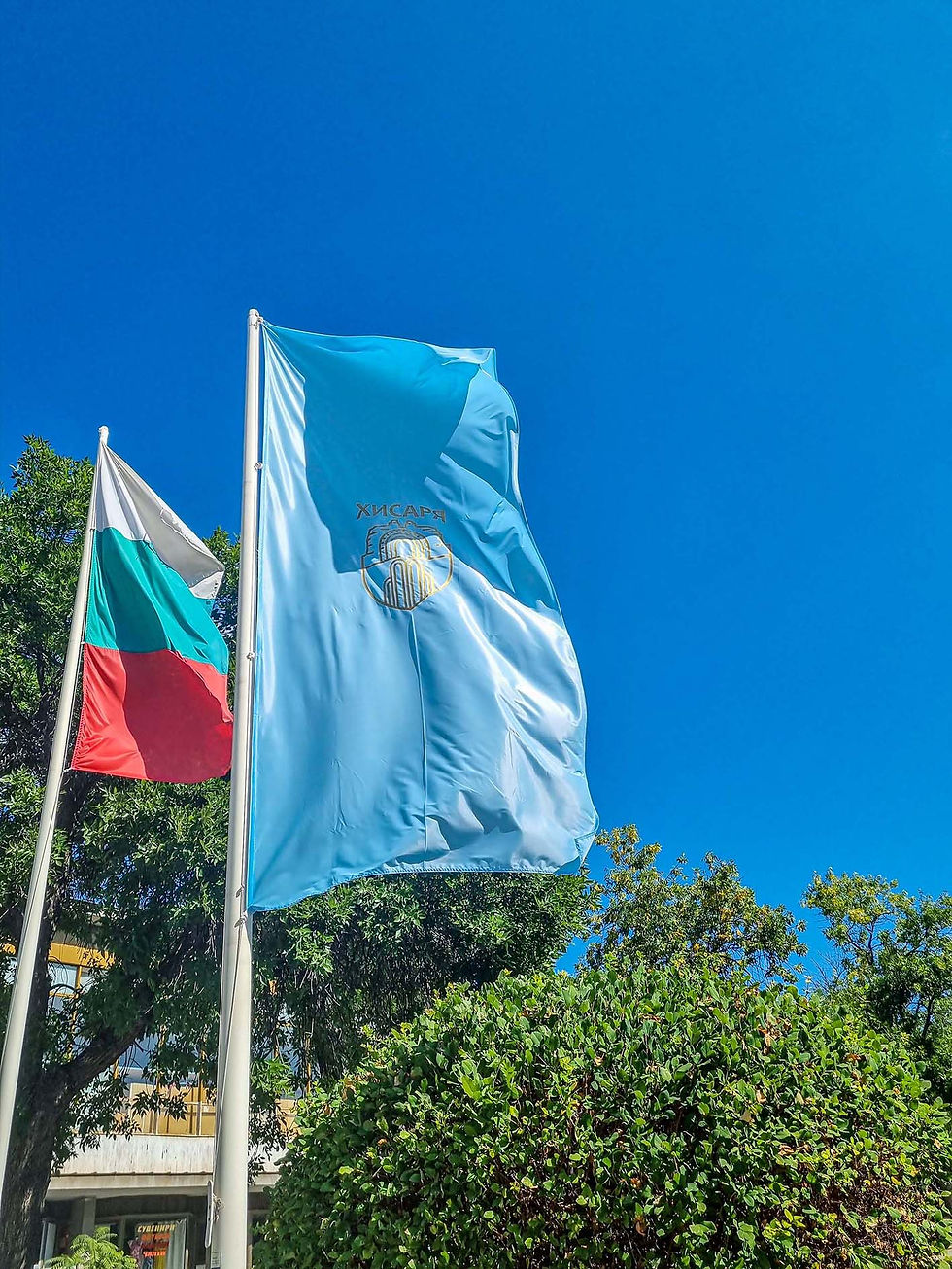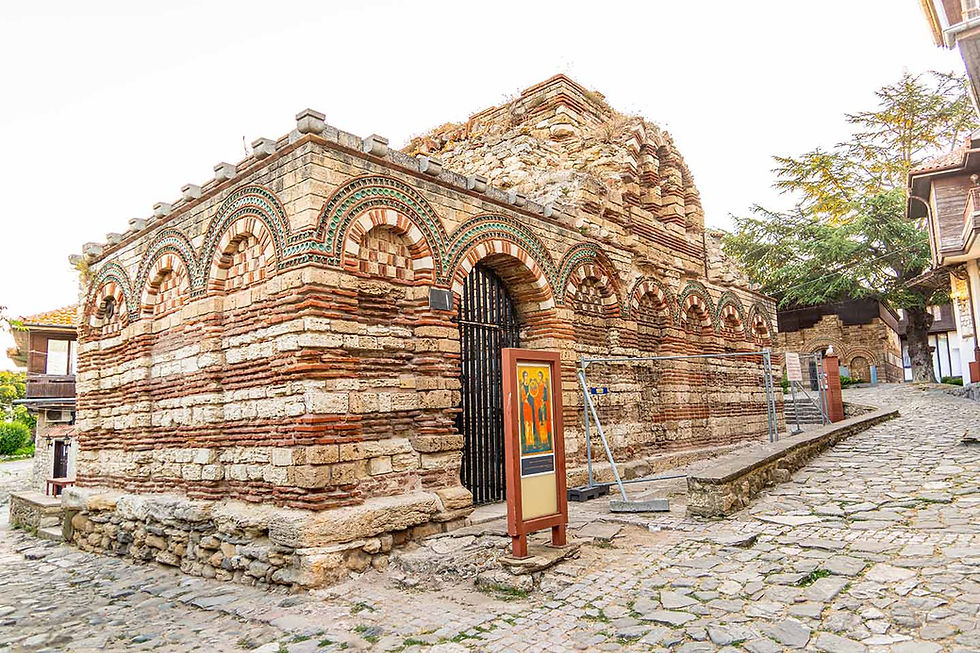Roman tomb in Hisarya
- Stefan Ivanov

- May 9, 2024
- 7 min read
Updated: Jan 17
Dear friends, in this post I will tell you in detail about the late Roman family tomb from the second half of the 4th century with a staircase corridor and a burial chamber, which is located in Hisarya.

It is no secret that our beloved Hisarya is famous for its unique healing hot mineral springs – one of the wonders of Bulgaria! This unique and so healthy wealth – the healing waters – have been gushing in these same places for thousands of years.
The Romans knew the healing power of the healing mineral springs very well, which is why not only Roman thermae (mineral baths – once ancient SPA centers) grew up nearby, but also large, beautiful and rich cities.
Today, on the territory of Hisarya, you can see the remains of the ancient city of Diocletianopolis – the pearl of balneotherapy in the Thrace province of the Roman Empire.
In 1976, by Decision of the Council of Ministers No. 199, the area enclosed by the fortress walls of the Roman city of Diocletianopolis was declared a National Archaeological Reserve!
An ancient city in the resort of Hisarya has been declared an immovable cultural asset (cultural monument) with the category of national significance - archaeological reserve and folk antiquity.
The Hisarya fortress, the fortress walls and the fortress facilities have been declared an immovable cultural asset (cultural monument) with the category of national significance - folk antiquity and an architectural and construction monument of culture from Antiquity and the Middle Ages.
In terms of its authenticity, preservation and originality of the fortification system and architecture, the Roman fortress city of Diocletianopolis ranks among the first places in Europe!
In 293 AD, Emperor Diocletian spent some time here because of the same healing mineral springs that are still known to us today. Fascinated, the emperor gave the settlement the status of a city, as well as his name - Diocletianopolis (also known as Diocletianopolis).
To protect it from enemy attacks, the city was surrounded by a solid fortress wall, erected by the skillful hands of Thracian craftsmen.
The ancient city was built according to all the requirements of Roman urban planning - with wide and straight streets (two main streets intersected at right angles in its center, and secondary streets ran parallel to them).
As a result of the long-term archaeological excavations, a large part of the buildings, the street network and the fortification system of the Roman city of Diocletianopolis have been studied, discovered and exhibited. Five necropolises (cemeteries) located outside the city limits have also been studied. Various types of tombs, as well as many single graves, have been discovered in them.

Only the largest of them is exhibited and accessible for visiting, and the only one with frescoes and floor mosaics. It is one of the most interesting architecturally and interiorly decorated late Roman tombs known to date in Bulgaria.
Its discovery was accidental in 1957.

The tomb consists of a vaulted stairwell and a burial chamber.

The corridor leads downward to the burial chamber at a 35-degree angle and is eight and a half meters long.

The corridor is made of two parallel walls, gradually passing into a vault, through which, through a narrow entrance formed by stone blocks, one enters the burial chamber.

The burial chamber is a rectangular room measuring 4.29 meters by 2.78 meters and 2.35 meters high.

The floor of the chamber is covered with a multi-colored mosaic in beautiful geometric shapes, resembling a colorful carpet.

The mosaic pebbles are black, light red, dark red, and white, bonded together with fine pink mortar.

The construction technique is opus verticulatum.

The central geometric motif (square) consists of overlapping hexagons enclosing sixteen smaller squares. These are filled with intersecting rows of mosaic pebbles of different colors.

Two burial beds, oriented east-west, were built on the mosaic floor.

Their front side is smoothly plastered and painted with a mural in the form of lowered draperies.

The walls of the burial chamber were covered with a belt of frescoes up to a meter and a half high from the floor.

They are colored rectangles resembling marble slabs.

Traces of murals are also visible on the vault of the corridor.

Six niches were built into the walls of the burial chamber - two on the east and west walls and one on the north and south walls.

They had a ritual purpose and gifts were placed in them.
The niches were painted with roses and other flowers, symbolizing the Garden of Eden.
Studies show that this tomb was used twice.
In the first use, the burial was probably carried out by cremation. The gifts and the urn with the ashes of the deceased were placed in the niches or on the mosaic floor.
The second burial was carried out by laying the body, and for this purpose two additional burial beds were built in the burial chamber. When they were made, part of the northern and southern niches were walled up.

To build the tomb, the ground was dug to a depth of five meters. After its construction, it was again filled with earth, leaving only the beginning of the corridor on the surface. Bricks and stones were used to build the tomb, bonded with mortar mixed with crushed bricks. The construction technique in which the tomb was built was mixed masonry opus mixtum - alternating stone and brick belts.
During the excavations, the tomb was found full of water and mud, which caused severe damage to the murals. Apart from small pieces of bones, no other objects were found. Apparently, it had been robbed in ancient times.
Based on its architectural features, construction, frescoes and mosaics, the tomb dates back to the era of late antiquity – the 4th century. There is no doubt that it was built for the family of a prominent slave owner, dignitary or military leader from the local aristocracy.
How do you get to the Roman family tomb?
Here are the coordinates of the final point.
The starting point for today's journey will be the main southern fortress gate of the ancient Diocletianopolis and currently the symbol of Hisarya - the Camels.

If you are by car, there is a large and convenient parking lot opposite the Camels where you can park.

Continue along the road that winds along the southern fortress wall.

It will take you to the beginning of a trail marked with a sign.

Right in front of the sign you will find steps.

Take the steps that lead to a very pleasant, quiet and peaceful path.

The path is about 300 meters long, which means that in less than ten minutes you will be in front of the tomb.

You will come out onto a large meadow, next to which there are benches where you can rest.

The entrance to the tomb is located in the middle of the meadow.

A late Roman family tomb is part of a route:
And why not offer you some fantastic route ideas?!
A great suggestion, right?
This way, each of you will be able to enjoy the sights of this wonderful city in an incomparable way!
And your stay in the most beloved Hisarya will become an unforgettable and impressive experience!
The ideas for routes presented here are completely diverse, so that people of all ages can benefit from them - young families with small children, couples in love, good and loyal friends, young in spirit, but with silver in their hair, or in other words - all lovers of peace, quiet and walks among immense wonders and pieces of history.
For each of the routes you will find detailed information - type of route, total length and duration, suitable equipment, age restrictions, what landmarks it passes through and what natural views to marvel at in which season.
Here they are:

How to get to the town of Hisarya?
Hisarya is a city in Southern Bulgaria. It is located in Plovdiv District and is the administrative center of Hisarya Municipality.
The city of Hisarya is located in the central part of Bulgaria, under the southern slopes of Sredna Gora, at 346 meters above sea level. It is about 25 kilometers south (about 27 minutes by car) of the city of Karlovo.
The relief is formed by the smooth transition from the slopes of Sredna Gora to the Upper Thracian Lowland.
The climate is transitional-continental with warm and mild winters. Snow cover lasts an average of 27 days a year. Spring is early and relatively warm, summer is characterized by high temperatures (July and August), low humidity and light winds. Autumn is sunny, warm and long. Strong and stormy winds are rare, which is very favorable for the winter season.
There are no air pollutants in the area of the city of Hisarya.
Hisarya stands on:
176 kilometers (about 2 hours and 5 minutes by car) from the capital
45 kilometers (about 1 hour by car) from the city of Plovdiv
394 kilometers (about 4 hours and 38 minutes by car) from the city of Varna
278 kilometers (about 2 hours and 43 minutes by car) from the city of Burgas
And finally, my dear friends,
you shouldn't miss checking out
the special photo album with moments –
discovered, experienced, filmed and shared with you!
































Comments